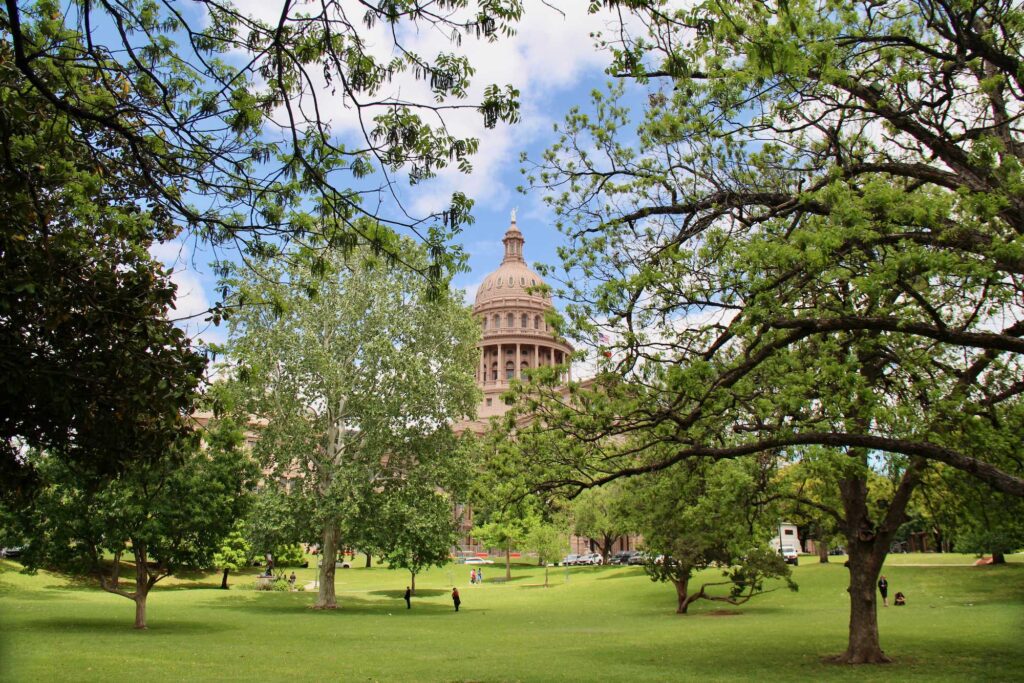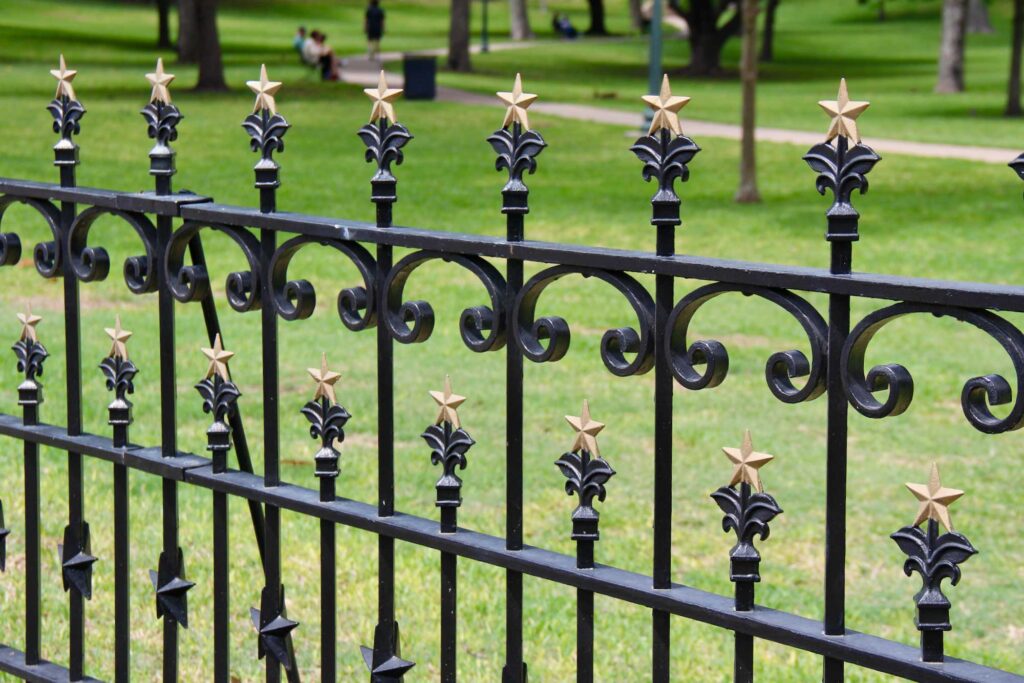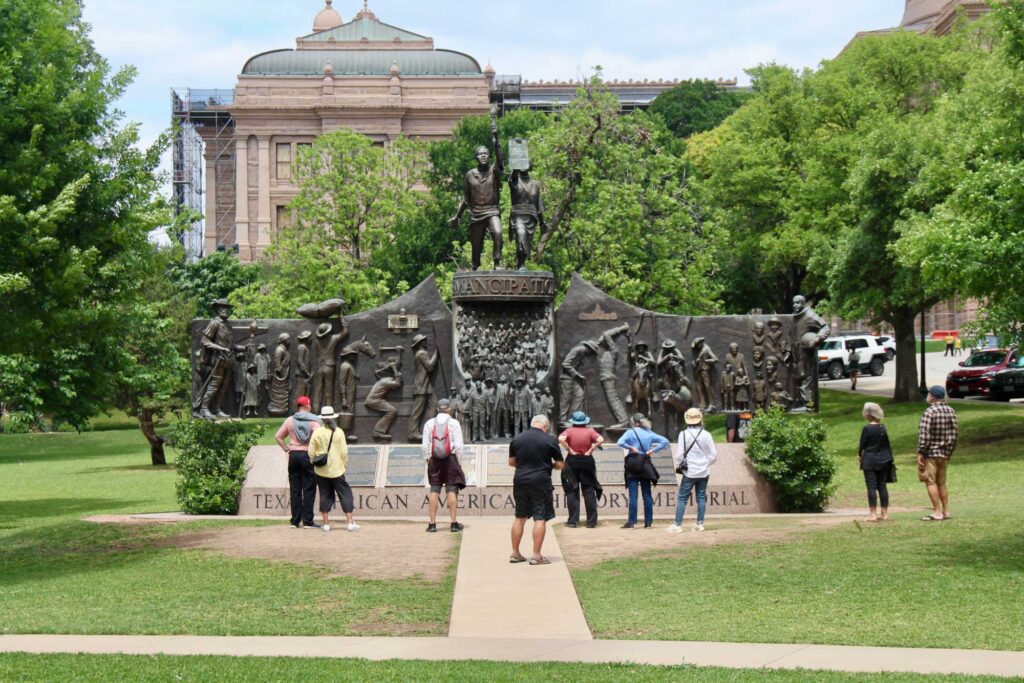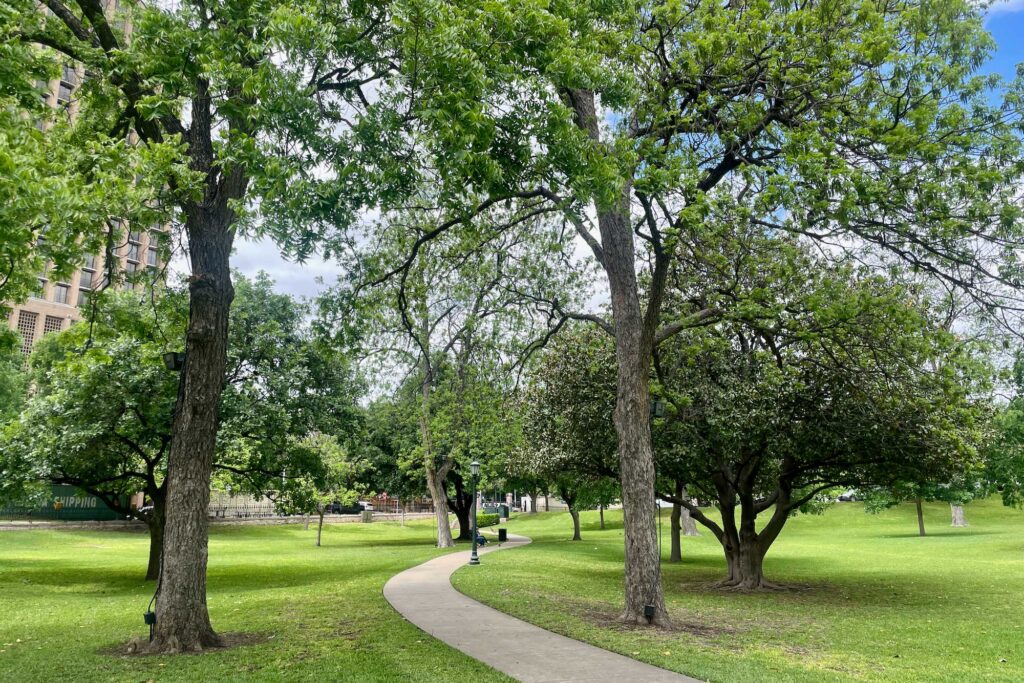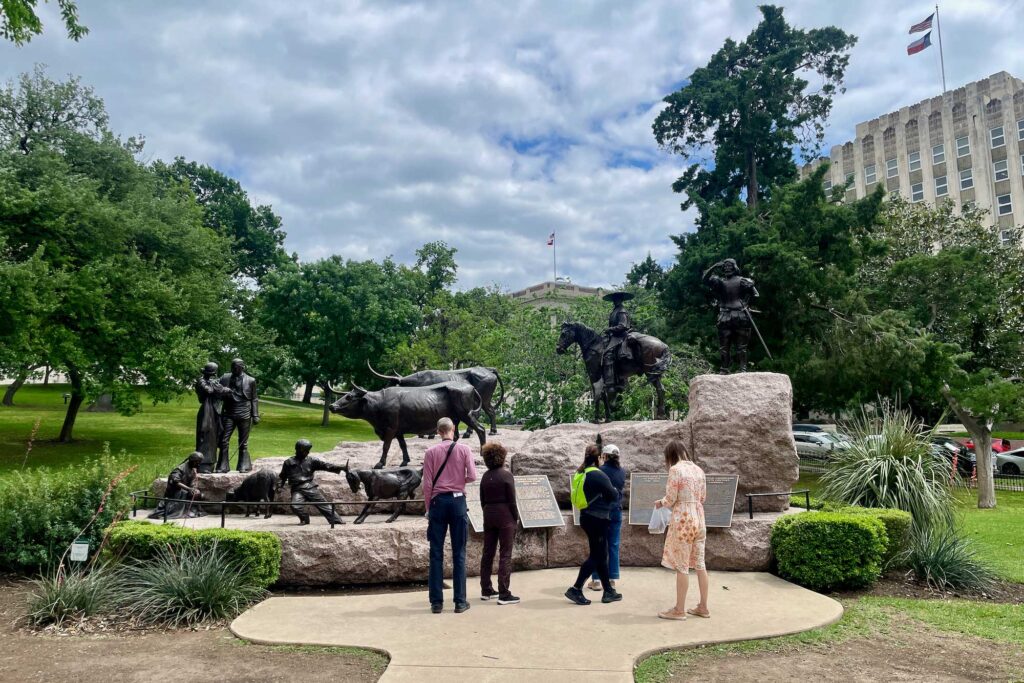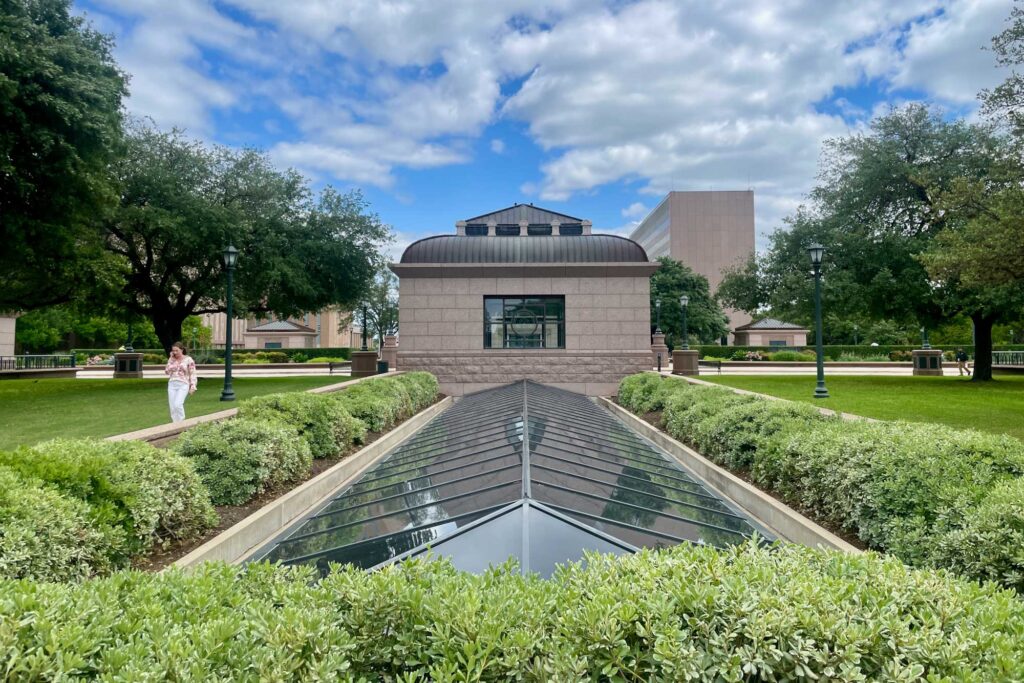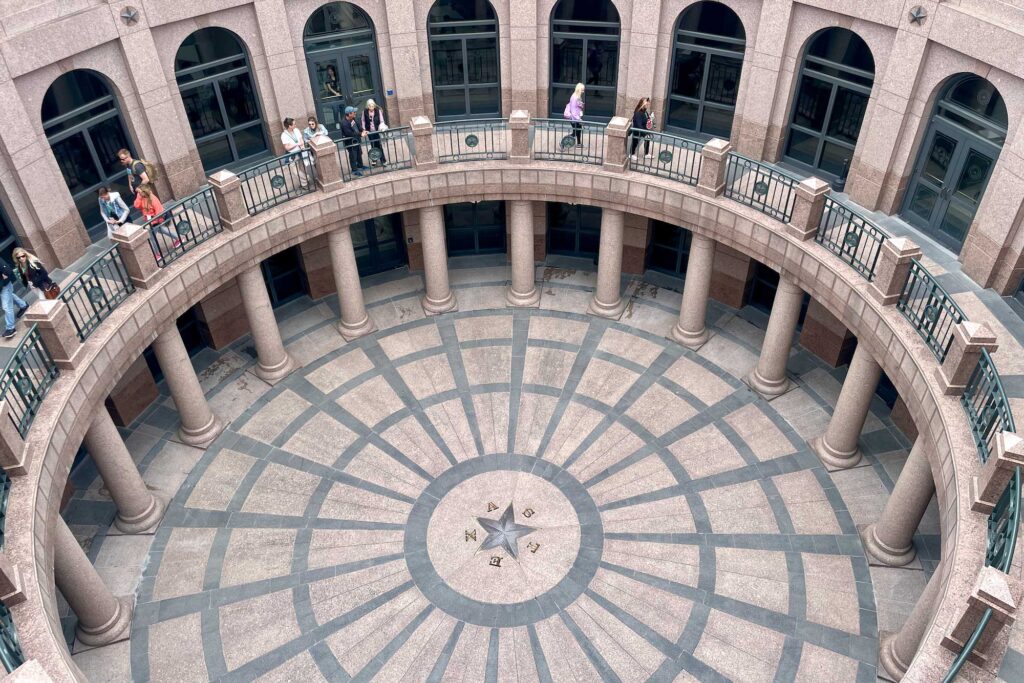The Texas Capitol Grounds are situated at the northern end of Congress Avenue. Functioning as a public park (the first in Austin), the grounds are used year-round as a space for celebration, tourism, protest, and everything in between. The Capitol Grounds find their place in our unique city as the public’s backyard; they are abundant with history, beauty, and people from all walks of life. Any visit to the Texas Capitol Grounds is sure to be a memorable one, with annual events ranging from Tejano Day to the Texas Book Festival to Tuba Christmas.
Following construction of the capitol building itself, the state hired civil engineer William Munro Johnson to beautify the area surrounding the structure. Focusing on the portion of the site between the capitol building and Congress Avenue, Johnson laid out a tree-lined pedestrian promenade flanked by curving carriage drives—all surrounded by star-tipped iron fencing. In 1891, Heroes of the Alamo became the first of many monuments to be installed on the site.
After over a century of use, the capitol and its grounds underwent an intensive restoration in 1995, along with the construction of a 667,000-square-foot extension. Located underground, the extension is almost completely invisible, with the exception of a series of skylights (camouflaged as planters) and a four-story “inverted rotunda” on the north side of the original capitol.
Landscape architect Everett L. Fly—the first African American to earn a Master of Landscape Architecture from the Harvard Graduate School of Design, and recipient of the 2014 National Humanities Medal—oversaw the effort to preserve and restore the grounds during the Capitol Extension Project. Fly was charged with reconstructing the original pedestrian promenade, restoring aging fixtures, and removing haphazard interventions that had been made throughout the grounds. As part of his work, Fly oversaw the extraction and 18-month-long preservation of 15 mature oak trees located on the North Lawn. During this period, Fly visited the grounds every five days in order to observe the health of each tree and make adjustments as needed. Upon completion of the underground Capitol Extension, the oaks were replanted alongside hundreds of new native trees and plants.
As with many historical places in the United States, there was a human cost associated with creating the Texas State Capitol during its initial construction in the 19th century. In an attempt to skirt labor expenses, the state took advantage of a program known as the Texas Convict Leasing Program to exploit the labor of predominantly Black men, women, and children. This practice was most prevalent during the Jim Crow era, and often used false convictions to incarcerate and force labor upon African American populations in the southern United States. When visiting the Capitol today, take note of the Texas African American History Memorial (2016) at the Southwest corner of the grounds. The memorial includes a depiction of prison-stripe clad laborers in order to bring awareness and remembrance to those who were forced to sacrifice their lives to build the place we enjoy today. – Raymond Santana-Linares, AIA, NOMA
